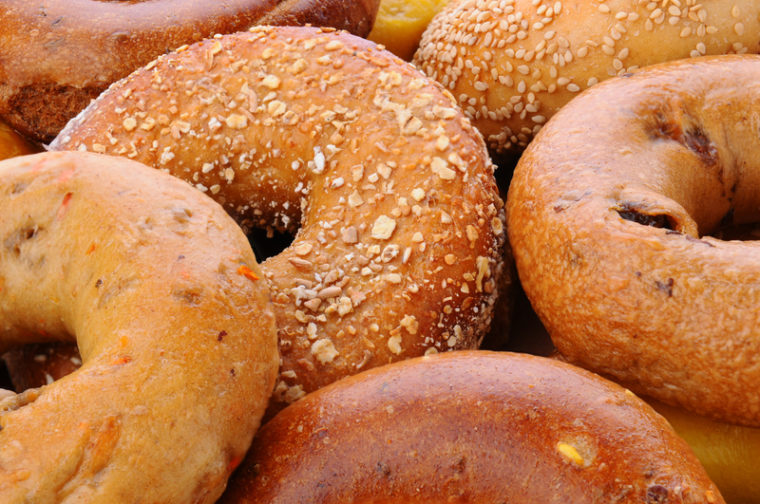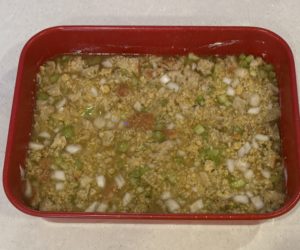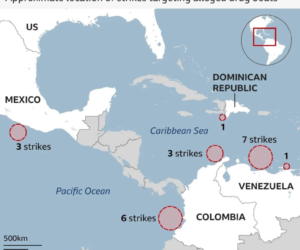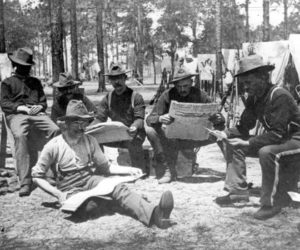
by Jason Maury Kaplan
In our village (we call it the East Village), bagels are a food of the people. Rich or poor, you can afford one. Years ago, working late nights as a sound editor, I got into the habit of stopping at a bagel shop on my way home, buying one onion bagel with an unprofitable amount of cream cheese and one pumpernickel with nothing on it. After I climbed back to my fifth-floor walk-up, turned on the light, and shooed away the roaches, I’d split the cream cheese between both bagels. That was dinner, and maybe breakfast the next morning. There were bagel shops on every third block, but I’d go to Bagels on the Square. It wasn’t just because they made a solid bagel. They were also on my route. That mattered. Bagels should be convenient.
When I eventually moved to Los Angeles in 2003, proper bagels were as easy to find as people walking to work. Not really a thing. I mean, yes, there were bagels. Just like there were in Denver, I suppose. Which is to say, there seemed to be rolls with holes. Fluffy. Bland. Bagel-shaped, yes. But soulless. Neutral. No opinion. No love for the thing itself. There were standouts for sure. (I’m looking at you, Bagel Broker.) But those were rare. And where were the bialys?
Someone needed to do something! Not me, though … I was too busy trying to make it as a screenwriter!
INT. A VENICE, CALIFORNIA RESTAURANT. YEARS LATER.
So, I failed to launch in entertainment. But the seed of the bagel idea had taken root in my head. A bagel shop felt like something my neighborhood, Silver Lake, desperately needed. And the skills needed to run one seemed to suit mine: an interest in business, a passion for food, and a personality that loved to kibbitz. Therefore, when an acquaintance, Nicole Rucker, offered me a job working the counter at the new Gjelina Take Away in Venice, I gratefully accepted. Aside from needing the job, I was curious to see if I had the energy for a fast-paced restaurant career; standing long hours, interacting with so many people. I figured a bagel business would require at least that much. Better be sure before I got in too deep.
At Gjelina, chefs were doing food the hard way. They paid up front for the best ingredients. They edited and revised their work. And the result was a feverish loyalty from customers who returned every week, or every day, or sometimes twice a day. I felt pride when random people told me ours was their favorite place to eat. As someone who still harbored hopes of selling a screenplay, I felt like the child of a celebrity. The idea of a food business went from a numbers thing to a people thing. The bar had been raised on my idea of a bagel shop, and I had a lot of work to do. I went deep.
Bread was foundational at Gjelina. It was edible evidence of a passion and a point of view, and as the MVP of a sandwich, it was next level. To this day, I can still taste Travis Lett’s tuna conserva on his olive sourdough. To make it, the bakers fed their yeast on a regular schedule. They stood around flour-dusted tables laughing and shaping loaves and having fun. So, what did I do? I learned how to bake better bread.
I grew my own sourdough starter from scratch. I bought an old Hobart mixer, installed it in my home kitchen behind my daughter’s high chair, and proceeded to bake a dozen bagels a day. My friends started getting hit with a ton of bagels. Do you have any odd-shaped bowls from that friend who took ceramics? It was like that. I baked so many bagels that my co-workers started calling me “Jagels.”
My dozen a day stretched out over a year and a half. Seems like a long time, when I look back on it. But if you’ve done any kind of baking, you know that once your work goes into the oven, there’s no adjusting. If it needed more leavening, too bad. If you used too much sugar, reduce it next time. And if you forgot the salt … throw it out. It’s not like cooking, where you can season the food as you go.
Iterating takes time, especially if you’re doing it in addition to your real job. But I could picture my target in my head: a bagel you could pick up and eat like a donut, unsliced, with nothing on it. It had to be shiny, because that’s part of the art. It had to be chewy but not dense. And it had to get sweeter as you chewed. This was something I learned by way of Nancy Silverton’s cookbook from La Brea Bakery. Her 78-year-old bagel baker, Izzy Cohen, insisted that sweetness should be in the chew, not on the tongue. I knew I wanted to make a bagel in the New York tradition, but I also wanted to use sourdough, as we had at Gjelina, which presented a lot of fun challenges. You need to keep it active by feeding it daily. You need to scale it up in volume, sometimes eight hours in advance. And then you must incorporate it in the right way, at the right time, to make sure your bagel is not too sour and not bubbly and blistery and full of giant holes. Eventually, I got there.
Then—as you might a screenplay—it was time to shop it around.
It was 2013 when I started looking at storefronts to rent. A small number of other aspirational bagel entrepreneurs also began peddling their stuff around town at this time. Evan from Yeastie Boys. Nick from Belle’s. And later, Ariel from Courage. My brain is wired for competition, so my emotional instinct was often: ENVY. But Oprah says, “Run your own race,” and that became my mantra. Working out of the beloved commissary, Crafted Kitchen, alongside my first employees, Adylene and Erik, I began slinging bagels pop-up style at other small businesses: Dinosaur Coffee, Smorgasburg, the Hollywood Farmers’ Market. I realized there was room for everyone.
Besides, who was I to deny the California spirit I’d discovered of camaraderie and support? Other bakers had opened their kitchens and cookbooks to me. Blake, former owner of Oakland’s Beauty’s Bagel Shop and inventor of the salt & pepper bagel, invited me in to observe his 3 a.m. routine. Jason, of the beloved Bagel Broker, let me check out his Thompson bagel former, a seminal part of both Los Angeles and bagel history.
By the time I settled on a permanent location, got it built out—an article in itself—and opened Maury’s doors in 2019, the stage was set for L.A. to shed its identity as a bagel desert.
In Los Angeles, I see the spirit of innovation, the need to strike out on one’s own. And most of my colleagues are doing their own thing. For my part, I didn’t want to sell a delicious but clearly unkosher bagel with bacon and eggs on it. Instead, at Maury’s, we offer the best versions I can of two classics that I love: bagels and smoked fish. That combo was missing here, and I just wanted people to know about it. I can’t tell you exactly how many people I’ve gotten addicted to the smoked whitefish bagel, but trust me: it’s a big number. My employee Adylene was the first. She still comes back for it.
As Maury’s enters our sixth year on a sleepy Silver Lake corner, it feels like the shop is finally hitting its stride. Our neighbors come every day, every few days, or once a week, without fail. Nurses and doctors coming off night shifts. Students on budgets. Comedy writers who take their bagels very seriously. They visit us on their way out of town, or as their first stop after landing at LAX. On any given day, it’s my pleasure to catch up with our regulars for a few stolen minutes, in good times and bad, as they pause to buy their bagels, however they like to have them. For a baker with a nostalgia for his village, it feels like a Hollywood ending.
Jason Maury Kaplan is a former sound editor and the author of Things that Suck. He is the owner/operator of Maury’s in Silver Lake, and lives with his wife and daughter in Altadena, California. This was written for Zócalo Public Square.
ID 31312648 ©
Steven Cukrov | Dreamstime.com
















